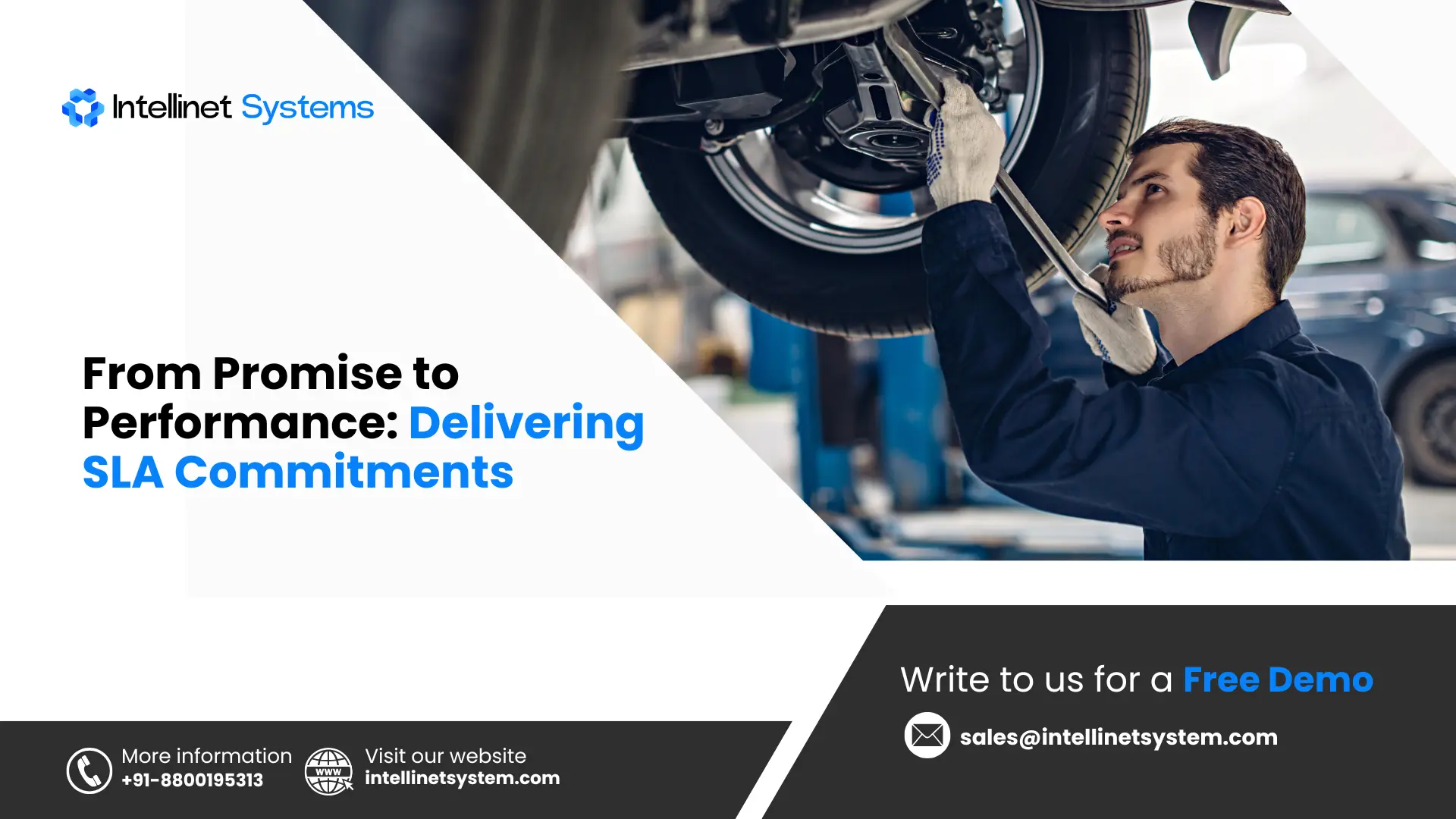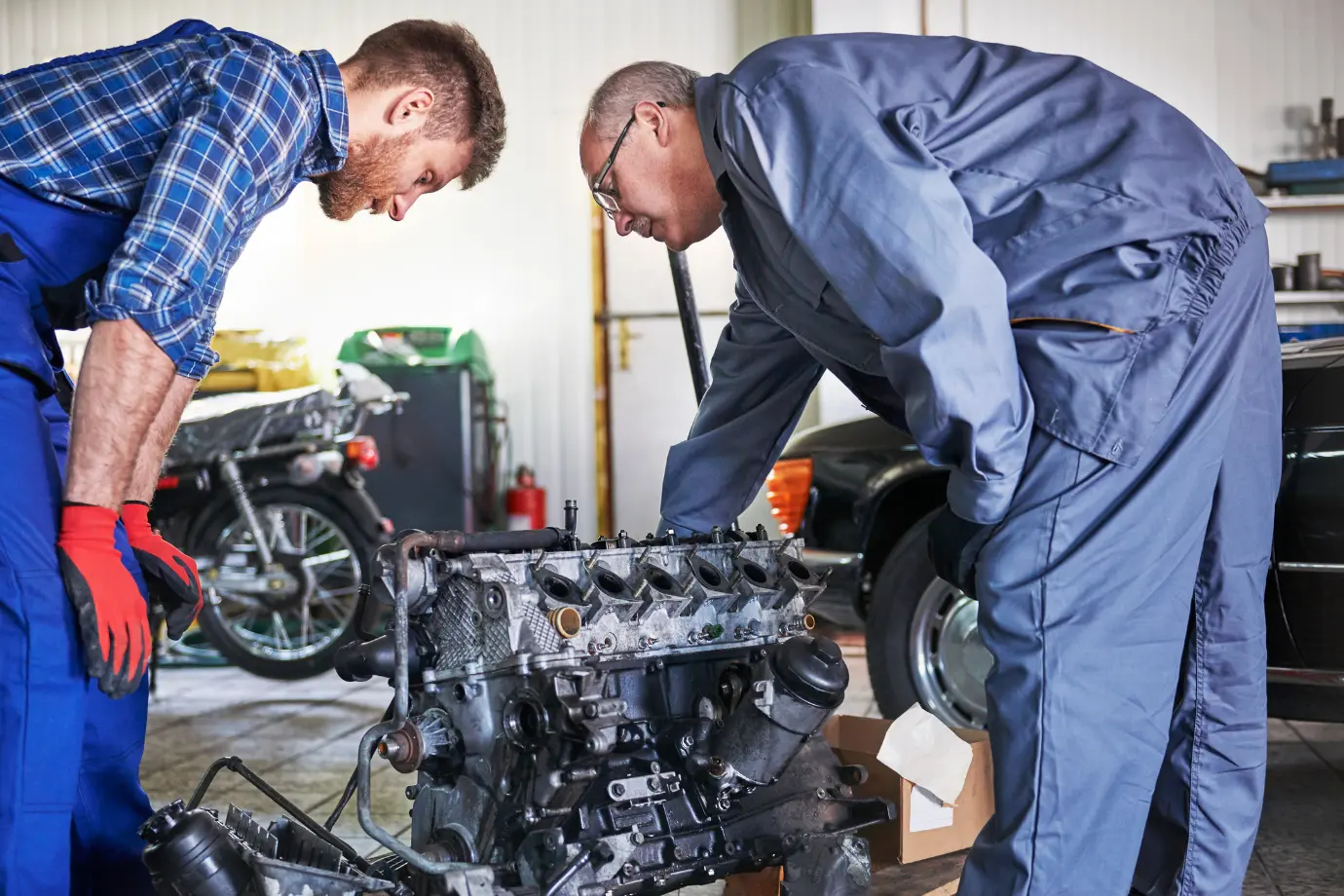
In the modern aftermarket industry, Original Equipment Manufacturers (OEMs) are rated according to their ability to deliver on their service level agreements (SLAs), setting the standards for response time, delivery accuracy, and resolution time. Such agreements are the foundation of the OEM–dealer–customer relationship in the aftermarket.
As expectations tighten and sustainability goals rise, OEMs must go beyond promises. Data-driven digital transformation is the way to go, as it helps OEMs turn commitments into measurable results, thus delivering on reliability, efficiency, and long-term aftermarket success.
In this blog, we explore how SLAs drive aftermarket success, how OEMs define and monitor them, and how the right connected platforms enable fulfillment of these commitments.
Understanding SLAs in the Aftermarket Operations

An SLA (Service Level Agreement) in the aftermarket is a formal contract or commitment between a service provider, such as an OEM, dealer, or independent service company, and a customer. It outlines the expected level of service related to maintenance, repairs, spare parts delivery, and other post-sales support, ensuring consistent performance, accountability, and customer satisfaction across the service network.
The essential SLA metrics are as follows:
- Response Time: This metric shows how quickly the OEM or service partner responds to a logged service request and, thus, their overall readiness, effectiveness, and commitment to providing support to the customer in real-time.
- Resolution Time: The period during which a dealer performs diagnosis, repair, and closure of a service request and thereby reflects the corporation’s capability of delivering complete solutions in the agreed time frames.
- First-Time Fix Rate: First-Time Fix Rate is a metric that signifies the number of issues that get completely fixed on the first visit, thus resulting in a reduction of repeat service calls, along with an increase in customer satisfaction, uptime, and overall operational efficiency.
- Parts Availability: Critical spare parts will be kept in stock to ensure smooth service operations and prevent delays or costly downtime.
- Customer Satisfaction Score (CSAT): This metric reveals the customer's opinion about the quality, speed, and communication of service, giving a picture of how tolerable SLAs are to real-world expectations and brand faith.
Aftermarket success depends on the coordination of these SLA commitments over the different interaction points that are dealers and field technicians, parts warehouses, and service management. A disruption anywhere will take down the cycle, increase costs, and lead to customer trust issues.
How OEMs Ensure SLA Compliance

To translate the SLA commitment into actual performance, OEMs must invest in integrated systems and streamlined processes. Leading OEMs are increasingly partnering with service lifecycle management solution providers, such as Intellinet Systems, to make this transformation a reality.
1. Connected Service Ecosystems
OEMs adopt integrated platforms that merge service, parts, and dealer functions so that data can be transferred smoothly between the departments, which leads to the reduction of delays and the tracking of service level agreements being transparent.
- A technician notes a defect, and the system immediately carries out parts availability checks, schedules dispatch, and coordinates logistics, thus ensuring that no service is interrupted at any operational level.
- Dealer portals, field-service applications, and warehouse systems are all developed according to the same data model, which not only boosts the cooperation but also makes quicker communication among the teams possible, providing better SLA results.
- The visibility provided in real-time through the different systems is of great help to OEMs in spotting potential SLA breaches early, giving them the chance to react, reallocate, and take corrective measures before the situation worsens.
2. Advanced Service Management Platforms
Automation brings together SLA tracking, dispatch optimization, and reporting into one smart view, ensuring that accountability and faster resolution are maintained throughout service and dealer networks.
- Tickets are created automatically, directed, and pushed up the chain of command following the SLA rules laid down, which means less human intervention but more response accuracy and compliance performance.
- The SLA dashboards allow service managers to see the real-time performance metrics, which consist of mean time to respond (MTTR) and resolution status, and enable them to make quick, data-driven decisions.
- The OEM aftermarket teams benefit from these insights by being able to assess dealer productivity, keep track of total SLA compliance, and identify the areas where either process refinement or operational upgrade is needed.
3. Optimized Spare Parts Availability
The optimized spare parts availability minimizes downtime, enhances operational efficiency, strengthens dealer performance, and improves customer satisfaction through intelligent, data-driven forecasting.
- Using analytics from the Intelli Catalog, OEMs can analyze parts order history to accurately forecast spare parts demand, so they will have the required stock levels for quick SLA fulfilment cycles.
- Using Intelli GPT, OEMs gain AI-powered demand forecasting and inventory insights, enabling them to conduct precise stock planning and reduce the risks of downtime across dealer networks.
4. Service Documentation and Knowledge Sharing
The reliable and timely fulfillment of service level agreements (SLAs) depends on skilled technicians who have immediate access to accurate information. Intelli Manual equips technicians with intelligent, interactive service manuals that enhance technical expertise and increase service accuracy.
- The Intelli Manual helps field engineers to interact with service manuals that are more dynamic than static ones, and in turn, helps them to quickly find service instructions and, at the same time, to increase the accuracy of the resolution.
- Technicians have the ability to very quickly find the right solution because of the natural language search, AI-powered chatbot, and smart navigation tools that together minimize downtime and human errors.
- There are collaboration features such as feedback loops, version control, and comment systems that help to ensure that the manuals keep changing and improving, thus promoting continuous learning and better service quality.
- Intellinet Systems offers Intelli Wiki, a centralized knowledge base platform that empowers OEMs to document and share field service resolutions efficiently. Technicians can quickly access this repository to find proven solutions and resolve issues on the spot, minimizing issue escalation, reducing downtime, and improving service response times.
5. Data-Driven SLA Governance
Efficient governance turns SLAs into numbers in terms of business objectives. OEMs, by using data analysis tools, can monitor performance, identify bottlenecks, and still continue to support improvements through service operations.
- To maintain service operations at a high level and be accountable always, OEMs monitor SLA KPIs like Mean Time To Repair (MTTR), first-time-fix rate (FTFR), spare parts availability, and downtime.
- Digital Solutions not only provide insights but also make it simple for the technicians to locate both the problems and their sources, as well as the areas that need intervention.
- Management includes SLA performance in dealer scorecards, pricing strategies, and audits, thus converting service level agreements into strategic drivers of aftermarket growth and customer trust.
Turning SLAs into a Competitive Advantage

If executed properly, SLAs move beyond compliance and become a strategic differentiator. The OEMs that always fulfill their service‐level agreements gain the following tangible business benefits:
- They increase customer trust and loyalty by offering predictable service delivery, consistent uptime, and good service quality, which leads to long-term partnerships among the OEMs, dealers, and end-users in the first place.
- They develop new revenue streams on a recurring basis through service contracts, extended warranties, and performance-based agreements, which in turn, create high-margin opportunities that are sustainable throughout the aftermarket value chain.
- They create a positive association with the brand as being reliable, ready for the future, and open to working on the company's reliability and customer-centric support with a good quality of service across all touchpoints in the aftermarket.
- They bring about practical, insight-driven, and data-driven changes that direct product design improvements, make reliability engineering more fruitful, and ignite the development of after-sales solutions that can easily meet the changing customer needs.
Integrating SLA performance into the operating model, along with the use of aftermarket software solutions, enables OEMs to not only fulfill their commitments but also turn superior service into a profitable aftermarket expansion.
Conclusion
To meet the SLAs and attain aftermarket success, OEMs have to go beyond the manual, isolated processes. Integrated digital solutions can support the transformation of promises into verifiable performance.
By improving uptime, increasing first-time fix rates, enhancing service quality, and enabling more flexible service models, OEMs can build more trustworthy dealer networks and boost aftermarket profitability.
Ready to redefine your SLA performance and drive aftermarket success? Book a free demo with Intellinet Systems today to explore our intelligent suite in action.
Explore More Insights
About the Author
Chandra Shekhar
Chandra Shekhar is the Senior Manager, Strategy & Business Development at Intellinet Systems. With over a decade of experience in the automotive industry, Chandra Shekhar has led digital transformation and aftersales strategy initiatives for OEMs across multiple markets. His background combines deep industry knowledge with a practical understanding of how technology can solve real operational challenges. He focuses on making complex ideas clear and relevant for automotive and aftermarket professionals navigating ongoing change.


























